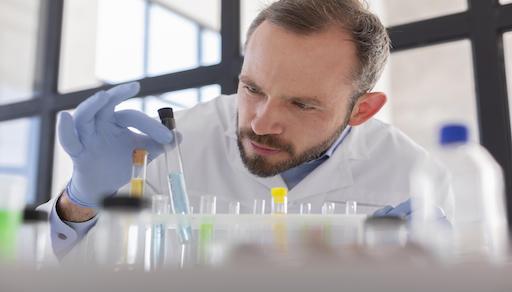Temperature plays a vital role in determining the rate at which chemical reactions take place. When a reaction occurs, particles collide and form new products. The frequency of these collisions increases as the temperature rises, resulting in faster rates of reaction. Understanding how temperature affects reaction rates can help scientists control their experiments and optimise results for various applications.
In this blog post, we’ll explore how temperature and other factors influence reaction rates, how to measure and analyse reactions based on temperature changes, and finally, look at some common mistakes made when attempting to control temperatures during experiments.
What Factors Influence the Rates of Reactions?
- Temperature – As temperature increases, the molecules of the reactants move faster and collide more often, resulting in a faster reaction rate.
- Concentration – When two reactants are present in more significant amounts, they collide more often – leading to faster reactions. Similarly, when one reactant is present in higher concentrations compared to others, it will become involved in more collisions and a quicker reaction.
- Surface Area – A larger surface area allows for more collisions between particles, increasing the chance of a successful reaction. This is why it’s common practice to grind or break down substances into smaller pieces before conducting experiments involving chemical reactions – it increases their total surface area.
- Catalysts – These provide an alternate pathway for atom rearrangements and reduce the overall energy barrier for a reaction to take place. This significantly reduces the time needed for a successful collision between two reacting molecules and consequently accelerates the rate of a chemical reaction.
- Pressure – Increasing pressures force molecules together, leading to more frequent collisions between reacting molecules, resulting in increased rates of chemical reactions.
How does temperature affect the rate of reaction?
Temperature has a significant effect on the rate of reaction. As temperature increases, particles move faster and collide more frequently with each other, leading to an increased rate of responses. Conversely, when temperatures decrease, the collisions between particles decrease, resulting in slower reaction rates. Increasing or decreasing the temperature can thus drastically alter the rate at which reactions occur.
Equipment Used in Laboratories to Measure Reaction Rates
Specific lab equipment can help scientists quickly and accurately measure the rate of a reaction, including:
- Calorimeters work by measuring the temperature difference between two reactants before and after they have been mixed. The temperature change is then used to calculate how much energy has been released or absorbed during the reaction process.
- Viscometers take advantage of the fact that most reactions increase or decrease the viscosity of reactant mixtures, allowing scientists to measure reaction rates based on these changes accurately.
- Titrators are used when it is necessary to precisely control the amounts of different chemicals used during an experiment – enabling researchers to analyse how changing concentrations affect teh rates of reaction.
- pH meters give scientists accurate readings about how acidity/alkalinity levels change due to chemical reactions – this information is invaluable when determining product purity or optimising production processes.
Common Mistakes Made When Measuring and Analysing Reactions Based on Temperature Changes
One of the most common mistakes scientists make when attempting to measure and analyse reactions based on temperature changes is needing to allow adequate time for the experiment to run. It’s essential to give enough time for reactants to interact fully before collecting data or analysing results.
Incorrect calibration can lead to unreliable readings, which could result in incorrect conclusions about the reaction rate. To ensure accurate readings, all instruments must be periodically checked and recalibrated according to their specific instructions by trained personnel.
Scientists must also be aware of any potential safety risks associated with handling hazardous materials at higher temperatures – such as increased vapour pressure or potential fire hazards if flammable substances are present. Proper safety protocols must be followed to prevent accidents during experiments.Even though many factors can affect a rate of reaction, by far, temperature has the strongest direct influence on reaction rates, with increasing temperature quickening the processes and decreasing slowing it down. At Techmate, we have a wide range of equipment that can help monitor your experiment’s temperature and reaction rates, including pH meters and Titrators. If you need help to understand exactly what you need in your lab, contact the team at Techmate here.

